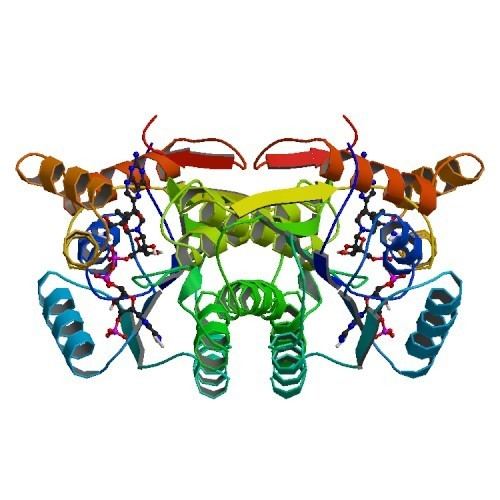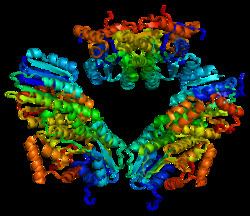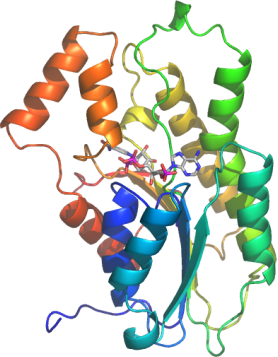Entrez 6697 | Ensembl ENSG00000116096 | |
 | ||
External IDs MGI: 103078 HomoloGene: 37735 GeneCards: SPR | ||
Function

Sepiapterin reductase (7,8-dihydrobiopterin:NADP+ oxidoreductase; EC 1.1.1.153) catalyzes the NADPH-dependent reduction of various carbonyl substances, including derivatives of pteridines, and belongs to a group of enzymes called aldo-keto reductases. SPR plays an important role in the biosynthesis of tetrahydrobiopterin.
Reaction
Sepiapterin reductase (SPR) catalyzes the chemical reaction

L-erythro-7,8-dihydrobiopterin + NADP+

Thus, the two substrates of this enzyme are L-erythro-7,8-dihydrobiopterin and NADP+, whereas its three products are sepiapterin, NADPH, and a single hydrogen ion (H+).

This enzyme belongs to the family of oxidoreductases, to be specific, those acting on the CH-OH group of donor with NAD+ or NADP+ as acceptor. The systematic name of this enzyme class is 7,8-dihydrobiopterin:NADP+ oxidoreductase. This enzyme participates in folate biosynthesis.
Clinical significance
Sepiapterin reductase deficiency belongs to the rare diseases. The clinical phenotype can include progressive psychomotor retardation, altered tone, seizures, choreoathetosis, temperature instability, hypersalivation, microcephaly, and irritability. Patients with sepiapterin reductase deficiency also manifest dystonia with diurnal variation, oculogyric crises, tremor, hypersomnolence, oculomotor apraxia, and weakness. Response to treatment is variable and the long-term and functional outcome is unknown. To provide a basis for improving the understanding of the epidemiology, genotype/phenotype correlation and outcome of these diseases their impact on the quality of life of patients, and for evaluating diagnostic and therapeutic strategies a patient registry was established by the noncommercial International Working Group on Neurotransmitter Related Disorders (iNTD).
